Forget time, Prince of Persia: The Lost Crown will have you manipulating space
Big in 2024 | Ahead of launch later this month, we speak to Prince of Persia: The Lost Crown game director Mounir Radi about the Metroidvania title

In my recent Prince of Persia: The Lost Crown preview, it became clear that Prince of Persia and Metroidvania was a combination that should have happened a lot sooner. Despite initial fan backlash, the reception to actually playing Ubisoft Montpellier's 2.5D platformer has been overwhelmingly positive, with so many seeing the potential for bringing the series' gameplay staples to a new genre.
Speaking to Mounir Radi, game director of Prince of Persia: The Lost Crown, although the team didn't start with Metroidvania as the structure for the game, it ended up being perfect. Not just because it's the team's "own take on the 2D games that respected our skills and expertise" from its experience with titles like Rayman Legends and Origins, but also plays well with the core concept of time that's flowed through the entire series.
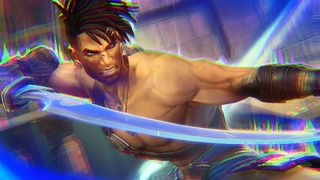
"Time has always been something important to the series, tying each game together even though they're not in the same timeline," explains Radi.
"We didn't start with the Metroidvania genre, we started with trying to understand what are the core pillars of the Prince of Persia series, and being sure that we did our job in representing those – the acrobatic fights, puzzles, platforming, and of course the narrative". But Radi admits that once the team established those core pillars, the main goal was then to "renew them" for a game that could unite players old and new.
Another time
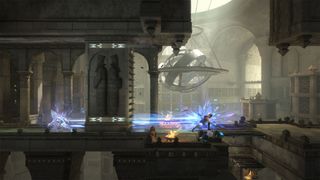
Part of that was taking time powers away from the player. "This is not about the prince, it's about a main character who has a name, and that in itself is a new evolution for the series," laughs Radi. You play as Sargon, one of the Prince's protectors and part of a group of elite warriors known as the Immortals. Tasked with retrieving the prince from Mount Qaf where some kidnappers are detaining him, it becomes quickly apparent that the time powers are in the control of our antagonists – specifically a man called Vahrem.
"We wanted to have the time powers back, but as a challenge for us – a constraint – we didn't want to just reuse the Time Rewind. And, because we love to create problems for ourselves," laughs Radi, "we also wanted to give those powers to the main antagonists".

"Sargon's bond with Vahrem is important in this story, and [it made it possible] to develop the time themes through the link between Sargon and Vahrem." So then the team has to ask what powers our hero Sargon would have to combat such time-based threats. "That was our challenge", says Radi, which was exactly when introducing the Metroidvania structure began to make perfect sense.
Sign up to the GamesRadar+ Newsletter
Weekly digests, tales from the communities you love, and more
"In a Metroidvania, one of the big things we give to our players are new powers, but also the ability to expand their playground. On the one hand you have Varhem, who has the time powers, with the ability to rewrite and slow down time. On the other, because this is a Metroidvania, you have Sargon who has the ability to master another facet of time – space. Mastering space is so important in a Metroidvania, so being able to own space and time in our story allows you to be something like a god."
Another place
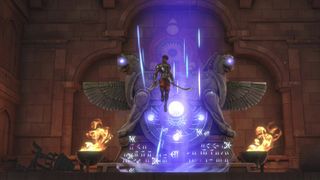
At least it's a fitting location for a man to become a god though, with Mount Qaf being the mythological mountain that's home to the gods of time themselves. "The sīmurğ is a time divinity that has witnessed the end of the world and we took this folklore to tell the story of a curse," explains Radi, giving some backstory to the reason why one night for Sargon was some 30-odd years for those inside Mount Qaf. "Our Immortals are the specific connections to this curse, and by digging and adventuring into Mount Qaf, we understand why Mount Qaf has turned out like this."
As Sargon starts to explore you'll also get a true sense of how much this game is a celebration of Persian culture too. Although the series to date has focused on the Islamic Golden Age of the 9th Century – just like our recent Assassin's Creed Mirage – The Lost Crown is telling a story of "a superhero in 'Legendary Persia'" with Mount Qaf being a reflection of how diverse the Persian world can be. The map contains so many diverse areas from forests to snowy mountains that the team has even snuck in some references to older Prince of Persia games. "It was important to have a specific connection to the other games," says Radi, so "there are some areas that are big cameos for the series".
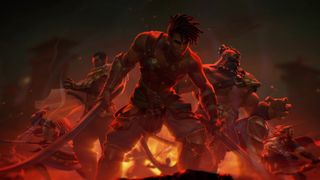
Alongside the ever-evolving map, our hero Sargon is also going to go on a transition of his own – and not just all the new abilities he'll get. "We wanted to depict a coming-of-age story," says Radi, "you can feel [at the beginning] that he has no pity for his enemies. He is a warrior, his mind is narrowed".
"We go from kind of a kooky warrior to a strong man, and we take a lot of reference from Miyamoto Musashi the famous warrior. We wanted to take the approach of 'What does it mean to be strong?' and that's the focus of Sargon's story – not just as a warrior, but also as a man. We wanted to push ourselves into telling a story that could go deeper than the previous games, even though it's 2.5D."
Radi admits it's been a lot of pressure tackling the first Prince of Persia game to launch in a decade. "It was tough because you have this huge legacy, and we know that players are expecting a specific follow-up to the 3D games. But you may know how the studio, Ubisoft Montpellier, has a way of doing what they want, we tend to be true to ourselves." From everything I've seen so far, I'm so glad they did.
Prince of Persia: The Lost Crown is out on PS5, PS4, Xbox Series X, Xbox One, PC and Switch on January 18.
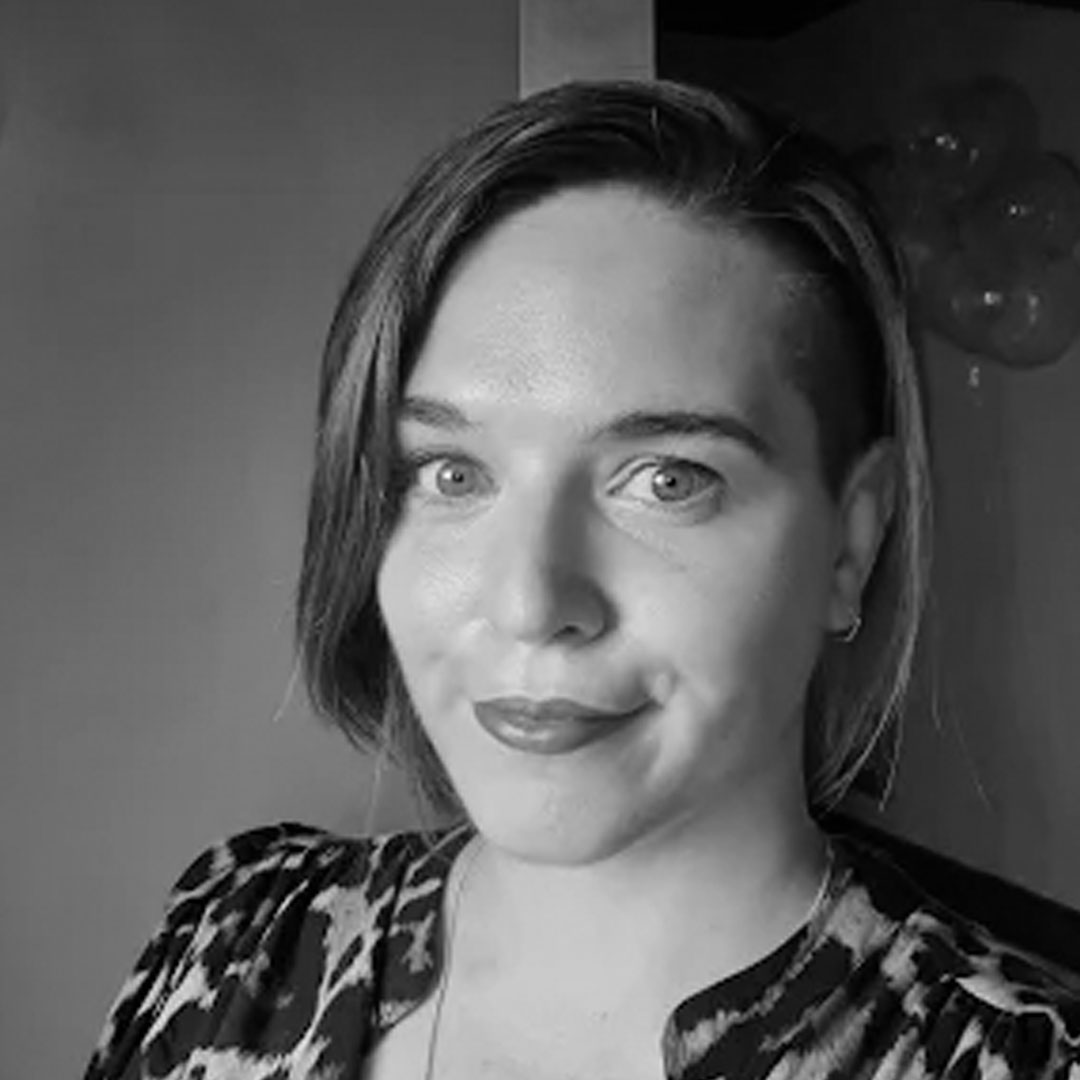
Sam Loveridge is the Global Editor-in-Chief of GamesRadar, and joined the team in August 2017. Sam came to GamesRadar after working at TrustedReviews, Digital Spy, and Fandom, following the completion of an MA in Journalism. In her time, she's also had appearances on The Guardian, BBC, and more. Her experience has seen her cover console and PC games, along with gaming hardware, for a decade, and for GamesRadar, she's in charge of the site's overall direction, managing the team, and making sure it's the best it can be. Her gaming passions lie with weird simulation games, big open-world RPGs, and beautifully crafted indies. She plays across all platforms, and specializes in titles like Pokemon, Assassin's Creed, The Sims, and more. Basically, she loves all games that aren't sports or fighting titles! In her spare time, Sam likes to live like Stardew Valley by cooking and baking, growing vegetables, and enjoying life in the countryside.

Escape From Tarkov devs reverse course on $250 PvE mode, promise it'll be free for all when the game exits beta - but its early access is still paywalled

The Division director is coming for Escape from Tarkov with his new extraction shooter: "There's still an opportunity to be the best in this genre"
Most Popular



